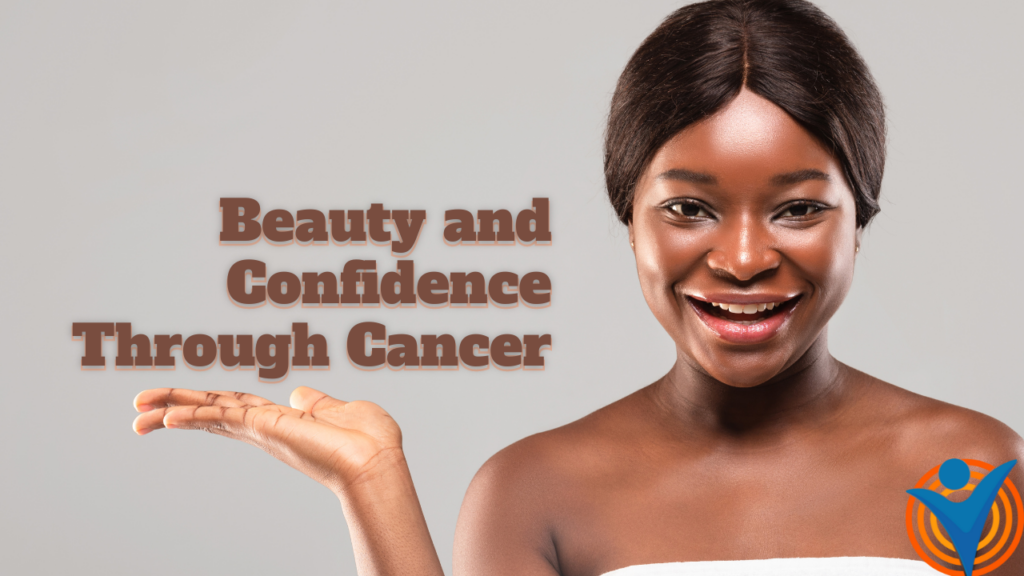Therapies, outcomes, side effects – all terms you probably have and will often hear as a cancer patient. But there is one aspect of treatment that’s much less talked about and yet so crucial to your well-being: Your looks. Cancer treatments do not only affect your normal body functions and cause discomfort; they can also affect your appearance. Some of these changes to appearance include:
- Hair loss
- Hair thinning
- Hyperpigmentation
- Patchy skin
- Rashes
- Nail discolouration
- Moist sores etc
These appearance-related treatment side effects can impact other spheres of your life, from body image to your self-esteem.
To aid your journey towards better health, we have a few tips to help you manage these appearance-related challenges and keep your confidence during and after treatment, starting with some good old beauty care.
Get a makeover
In sickness and health, a makeover is always an ‘I do’. Makeovers and beauty care are great ways to improve confidence while managing appearance-related side effects. Beauty care includes but is not limited to wigs, manicures, makeup sessions, and other aesthetic treatments. Now, regular makeup sessions can be on the pricey end. So if you’d like a little D.I.Y., here are a few tips and tricks for doing your makeup.
Draw your brows to flatter your face
- Try using a soft eye pencil in the shade closest to your natural hair colour. You can also use an angle brush and a brow pomade to create precise strokes.
- Use a hypoallergenic brand of eyeliner and some mascara to increase the volume and length of your lashes.
- For a quick fix, you can also try false lashes with hypoallergenic lash glue.
- If your brows have fallen off, carve out a new brow shape according to the position of your brow bone or with a brow stencil for guidance. Here’s a great youtube tutorial for more help.
Add colour to your look with complexion products, blushes, and lip products
Cancer treatments can cause your skin to look pale, so colour cosmetics are a great way to brighten your look and add warmth. To do this:
- Apply lip products like lipsticks and lip glosses in your colour of choice. You can also use tinted lip balms for a dose of both colour and hydration.
- Blend out some blush on your cheeks and across the bridge of your nose.
- Try complexion products formulated with SPF. Complexion products include foundation and concealer, which are great for concealing blemishes, dark spots, and discoloration. Suppose you can only partially cover up your blemishes with a foundation. In that case, our pro tip is to apply a colour-correcting concealer first to cancel the discoloration and then go in with the foundation.
- If a foundation feels a tad too heavy on your skin, try tinted moisturisers or CC creams instead.
Wigs make the day
For hair-related challenges like hair loss and hair thinning, wigs are a convenient option that can instantly elevate your confidence. We recommend short, easy-to-wear wigs that do not have a tight band or need too much maintenance. However, you can experiment and try out whatever works for you, even by rocking a bald look.
For men facing hair-related challenges, toupees are accessible, long-wear, and available in several hair textures similar to yours for a seamless, less-detectable look.
Wear out your wardrobe
Feeling down on most days of cancer treatment is okay, but a great outfit can help perk up your mood and lift your confidence. Try shopping for easy-to-wear outfits in your favourite colours. If complete outfits are a no, incorporate smaller pieces and trinkets into your ward wear, like silk scarves in a pop of your favourite colour or bracelets and crocs you’d want to show everyone.
Incorporate routines and rituals
While some people might find better self-acceptance and confidence in makeup and wigs, others might find them in self-care rituals like skincare and exercise.
Skincare
When buying skincare products, it’s essential to read the ingredient list and check in with your doctor or healthcare provider before use. Checking in with your doctor ensures that your skincare does not interfere with your treatments or treatment outcome. It’s also crucial you conduct a patch test before using. For skincare to try:
– Sunscreens are top of the list as they protect your changing skin from the sun’s harmful ultraviolet rays and avoid worsening skin conditions like hyperpigmentation.
– Simple moisturisers and serums as they hydrate your skin.
– Occasional use of sheet masks for extra hydration.
Exercise
Making exercise a part of your routine can improve your physical agility and, in turn, your mental health and self-esteem. It goes a long way in helping you feel better about your body. However, it’s still vital to check in with your doctor as the level and type of exercise you do can depend on what stage of cancer you’re in and what your body can currently handle. Generally, we recommend starting slowly with easy-to-do activities like stretching and walking.
Support groups go the extra mile
You can never overestimate the benefits of having a community, or in this case, a support group. Support groups are a safe space for people with similar experiences, such as cancer treatment. Joining one and being a part of the conversations there, can help with the solitude that a cancer diagnosis presents with and, in turn, aid your confidence during treatment. You could even try a group makeover and hair care session with members of the support group for fun.
Here at Oncopadi, you can join the S.O.A.R. Champions, an in-person and online community that supports, cares for, and provides warmth to members at different phases of their cancer journey..
If you have any questions or need any recommendations for beauty care? Please drop them in the comment section.
You can also have a quick chat with an oncologist directly or Learn more about the effects of cancer treatment.

